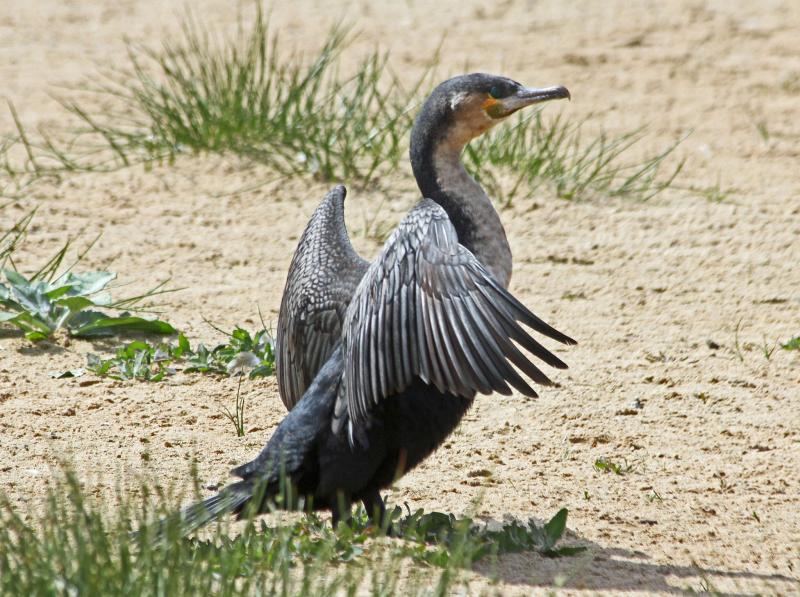Last week, we got into the distinction between natural selection and evolution. In my post, I tried to express the importance of exposing students to other mechanisms of evolution, namely genetic drift, gene flow, and mutation. This week’s misconception is closely related to the erroneous idea that evolution only happens by way of natural selection.
All traits are adaptive.
It’s so tempting to just say, “Belly button!” or “Male nipples!” or “Spandrels of San Marco!” and call it a day, but I suppose I should provide a bit more by way of explanation…so let’s get into it.
To be adaptive in the evolutionary sense of the word, a trait has to meet certain criteria when it first shows up in a population: It has to be both heritable (passed from parent to offspring) and functional (perform a task) and it has to increase an individual’s fitness (increase the chance the individual will survive and pass the trait on to its offspring).
 What is a trait if it’s not an adaptation? Some traits are simply byproducts of something else. The belly button itself has no function. Rather, it is just a scar of the in utero connection of the umbilical cord. Male nipples don’t have function—they exist because of the way human bodies are patterned in early development. The structure and chemistry of the protein hemoglobin is definitely an adaptation for carrying oxygen, but vertebrate blood’s redness does not have a function; it’s just a side-effect of its chemistry. As for Gould and Lewontin’s famous spandrels, they’re just what you get when you use arches to support a domed roof, or a bridge across the Seine.
What is a trait if it’s not an adaptation? Some traits are simply byproducts of something else. The belly button itself has no function. Rather, it is just a scar of the in utero connection of the umbilical cord. Male nipples don’t have function—they exist because of the way human bodies are patterned in early development. The structure and chemistry of the protein hemoglobin is definitely an adaptation for carrying oxygen, but vertebrate blood’s redness does not have a function; it’s just a side-effect of its chemistry. As for Gould and Lewontin’s famous spandrels, they’re just what you get when you use arches to support a domed roof, or a bridge across the Seine.
 classic definition of a vestigial structure is a remnant of a feature that was adaptive somewhere along the organism’s ancestral line. Textbooks will often declare that vestigial structures serve no function, but I always soften my language a bit and say that vestigial structures have “little to no function” or better yet, “they no longer serve their original function.” Whale hip bones, a classic vestigial structure, serve as attachment sites for some abdominal muscles, for example. So, while they certainly don’t perform a locomotor function, I wouldn’t go so far as to say that they perform no function.
classic definition of a vestigial structure is a remnant of a feature that was adaptive somewhere along the organism’s ancestral line. Textbooks will often declare that vestigial structures serve no function, but I always soften my language a bit and say that vestigial structures have “little to no function” or better yet, “they no longer serve their original function.” Whale hip bones, a classic vestigial structure, serve as attachment sites for some abdominal muscles, for example. So, while they certainly don’t perform a locomotor function, I wouldn’t go so far as to say that they perform no function.There are also structures that are just there by chance. Understanding Evolution has a great example of this: Why does the mRNA codon GGC code for the amino acid glycine? Answer: it just does. I admit it’s not a very satisfactory answer, but there isn’t a better one. In fact, this answer comes from Dr. Crick (of Watson & fame) who dubbed the genetic code a “frozen accident.” During chemical evolution, GGC resulted in glycine and it’s been handed down that way ever since. Another example takes us back to Gould, who wrote about the accidental patterning of five digits in tetrapods in his essay “Eight Little Piggies”: “Five was not meant to be, but just happens to be. Other configurations would have worked and might have evolved, but they didn’t—and five works well enough.”
So you may be wondering why it’s important to recognize that not everything is adaptive. The answer, for me anyway, has to do with understanding that the evolution of life on Earth is neither completely random nor completely directional. Those two facts together are just incredible, and to really get evolution, we need to see the beauty in both.
Part 2 of this post, which will go up next Monday, will get into some suggestions for teaching these concepts. Until then, chat away in the comments area below. Glenn Branch tells me that there is some debate about spandrels vs. squinches vs. pendentives. Any architects out there? Who am I kidding? You’re all going to talk about nipples, aren’t you?

